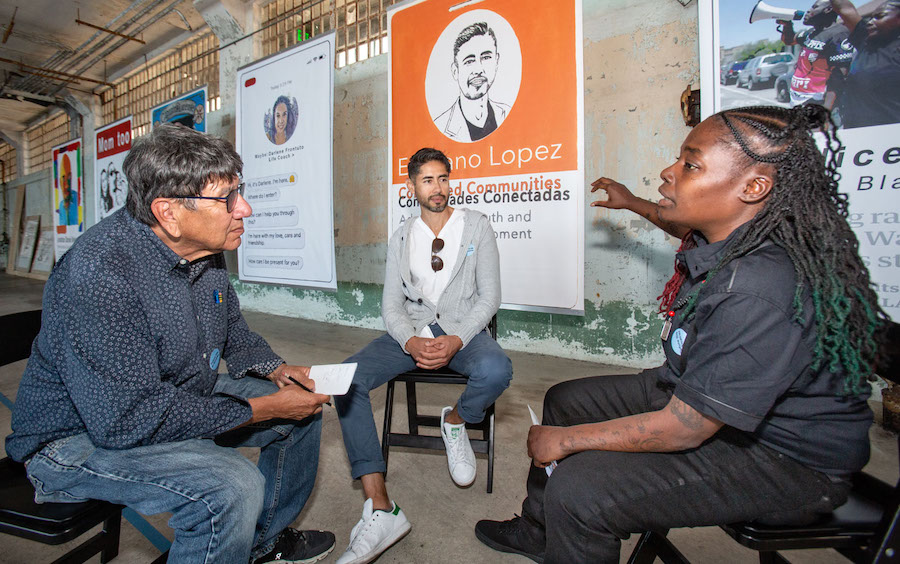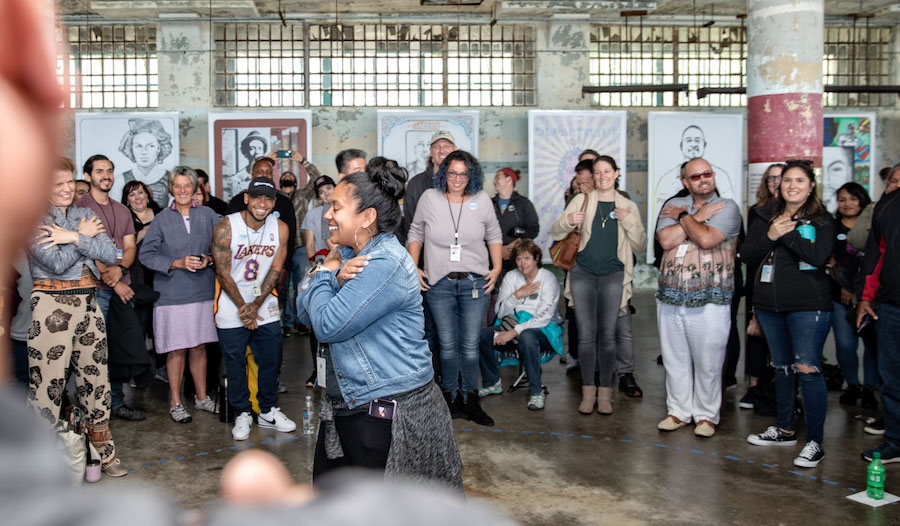Future IDs Guiding Considerations
The Future IDs collaborators developed an evolving set of guiding considerations. They are suggestions, not commands, and are shared here for other artists and collaborators to consider as they build relationships in social practice art projects.
1. Sharing control with collaborators, whether artists or non-artists, is crucial: Invite project participants to help conceptualize social-aesthetic structures, to co-produce artistic components, and to direct the advocacy intention of the work.
2. Each artist or collective develops their own way of working: Identify the work needed to build different types of relationships. Relationship partners include key collaborators, community and institutional partners, participants, allies, thought leaders, audiences, and others.
3. Collaboration requires flexibility and acceptance: It would not be reasonable to expect all of the many key participants to be similarly invested. Contributors bring their own expertise that influences the work. Honor the contributions while recognizing that these relationships are in constant negotiation.
4. Be patient and open: Asking someone to work on a project is easy, but maintaining relationships requires being present with people and being a participant in the world on their terms.
5. It’s going to get messy, so be prepared: Set common goals with collaborators and other partners early in the process to create a solid foundation for the project. These goals will guide the navigation of complicated challenges that could not have been predicted. Work with the consequences as one of the materials.
6. Aesthetics and advocacy can be competing project objectives. There is a dance in navigating the unavoidable tension between aesthetics and advocacy that requires making difficult choices. For Future IDs collaborators, the initial goal-setting often led to prioritizing social impact over both artistic recognition and the ease of communicating the project to the media.
7. Ask yourself what it means to walk into a space ethically: Recognize the complexities of race, gender, privilege, and discrimination. Be aware that the artist and some of the collaborators come from a position of power just by leading the project.
8. Power is a cultural, social, political, and economic construct. Working in collaboration and forming authentic partnerships requires understanding the fluidity of who holds weight in a particular moment and its significance.
9. Practice hospitality, deep listening, and deep “hanging out”: Deliberate on how we care as a society. Build trust. Create a space where people’s voices and experiences are valued. Remember that active listening can be a difficult skill to put into practice.
10. Come together to create a shift in consciousness: Cultivate a culture of mutual respect and a willingness to say things that are uncomfortable or critical. Hold space for a deep level of “realness.” This vulnerable emotional space means engaging in unexpected dialogue and building emotional connection.
11. Strive to become mutual allies of one another.

